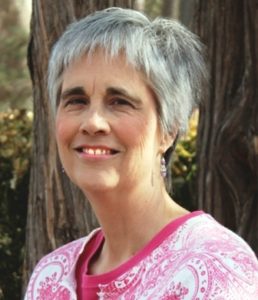 Guest Post
Guest Post
by Jo Meserve Mach
The books in everyone’s homes give out powerful messages. These messages can be scary, confusing, exciting, or hopeful.
My job as an Occupational Therapist providing infant-toddler services brought me into many homes where my role was to teach the parents of a child with a developmental delay how to help their child use their abilities. The parents were often reading books about their child’s disabilities. These books were scary and confusing.
All children want to belong. They want to be part of their family and community. My job was to help parents get past the scary and confusing part of their child’s disabilities so they could discover the excitement and hope within their child’s abilities.
I worked in this role for over seventeen years and met hundreds of children in all types of families. Usually during my visits I sat on the floor, amongst toys and books, as I talked and planned with the parent. Some of the toys were specialized toys for children with disabilities; most were not. The books were generally books common to most homes and rarely included a child with a disability. The message in these children’s books said their children didn’t belong. Their children weren’t visible in these stories.
Over and over again I thought to myself how easily a children’s book could bring these parents a message of hope. How wonderful it would be if the book lying on the floor beside us showed how their child with special needs or a disability could be included in their family and community. It wouldn’t be a specialized book. It would be a book that was just fun and encouraging for all children. Yet, it would shout, “Yes, you belong to our world! Yes, you are important in our world!”
All authors need to understand that children and adults with disabilities are truly like everyone else. Just as different skin color is part of our humanity, so is different ability part of our humanity. We all do belong to our communities and our world. We all have our own gifts to share.
Authors could share this message of belonging in the following ways:
- Include children with special needs in their stories without emphasizing the child’s disabilities – NOT stating the child has a disability.
- Have children or adults with disabilities in their stories be in roles that are typical for anyone. For example, the teacher could use a wheelchair, the postman might use a leg brace, a friend could be carrying a communication device when they go to a party.
- By NOT having other children be in the role of helping the child with disabilities. For example, present the children as equals on the playground. They may play differently, but they are playing alongside each other vs. one helping the other.
- By having the child or adult with a disability be a leader, share their knowledge or joy, in a way that enhances all the others in the story. For example, the child with autism might be the one who solves a mystery at school.
When including children or adults with disabilities in stories, the most important thing to remember is that they are a person first. If you do feel it is valuable to share their disability you should state “a child with autism” and not use terminology such as “an autistic child.” This is called person first language and is much more respectful. Keeping this in mind as you develop the characters in your story, you should think of every character in your story as a child or person first. This will help you identify their characteristics within the context of your story. What does this person love to do? What makes this person laugh? What is this person’s favorite color? You are not first thinking of what disability they might have and stereotyping them into a certain character.
As your story develops, the characteristics that represent the child’s special needs can become visible. For example, a character that has autism may be overwhelmed by the chaos in the story. But now this trait is just part of the character. Your story respectfully and naturally includes children or adults with disabilities. It also is more representative of our communities and presents diversity.
Jo Meserve Mach, author and publisher, spent 36 years as an Occupational Therapist and is the author of eight children’s books featuring children with special needs or disabilities. She wants all children to experience the joy of going to their public library and finding someone ‘just like them’ in a storybook. You can learn more about her at her website and her Author Central page.

I love the “person first language” idea! Something new to learn every day. Thank you for this thoughtful article.
I think this is an excellent idea, Jo, just showing the kids as regular people. I have done this repeatedly with race, had characters of black, Asian, Hispanic, whatever, just ordinary people showing up in various roles. I seldom have children in my books, but it is something I’ll keep in mind for future reference.
Thank you, for your thoughts. Yes, once you start thinking that way it’s easy to write that way:)
Wonderful post – thank you for the ideas.
So glad you find them helpful. Thanks for letting me know!
I love this article. I am ashamed to say including disabled characters has not occurred to me. I have just written a book about a “small” child overcoming obstacles, but I will definitely keep this in mind for future books. Thank you, Jo.
I’m so glad this will open up your world to include children with special needs – remember characters with disabilities not disabled characters:) Best wishes!
Got it. Thank you. 🙂